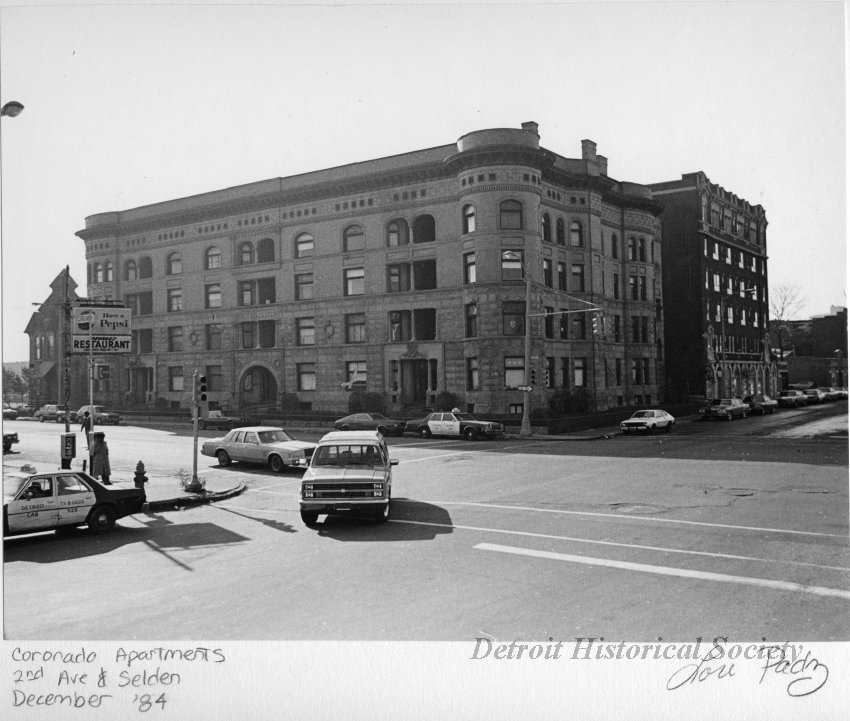The Willis-Selden Historic District comprises the area along Willis, Alexandrine, and Selden streets, running from Woodward Avenue on the east to Third Avenue on the west. The district was added to the National Register of Historic Places in 1997.
The architectural style of area buildings include Victorian, Colonial Revival, Romanesque, Commercial, Queen Anne, Beaux Arts, and Art Deco, with the majority of the buildings having been erected during the late 19th and early 20th centuries.
The land forming the Willis-Selden Historic District originally contained the Park Lots, the Cass Farm, and the Jones/Crane Farm. These three sections were subdivided in the late 19th century, making the land a popular development area for Detroit’s relatively wealthy professional class. With the development of electric street cars in the 1890s, the area attracted people employed in Downtown Detroit’s offices and shops because of the easy commute to work. Following the advent of the automotive industry, Willis-Selden became one of Detroit’s leading commercial districts, and by the early 20th century the district was home to several of Detroit’s auto industry suppliers, causing 41 percent of its commercial buildings built between 1910 and 1930 to be auto-related. In order to fulfill the housing needs of the new influx of auto workers into the city, the district also built several large apartment complexes with a high density of units. The beginning of the district’s decline was marked by the Great Depression, which negatively impacted Detroit’s auto industry. Following the 1967 Detroit Uprising, the area fell into a steep decline, developing a reputation as a drug and crime infested area. However, with the expansion of Henry Ford Medical Center, the Detroit Medical Center and Wayne State University, a revitalization of the neighborhood was sparked.
The Willis-Selden Historic District contains 102 buildings in total. Of these, five are historically significant in their own right. These include the Detroit-Columbia Central Office Building, the Cass Avenue Methodist Episcopal Church, the Coronado Apartments, the Stuber-Stone Building, and the Detroit Edison Company Willis Avenue Station.
